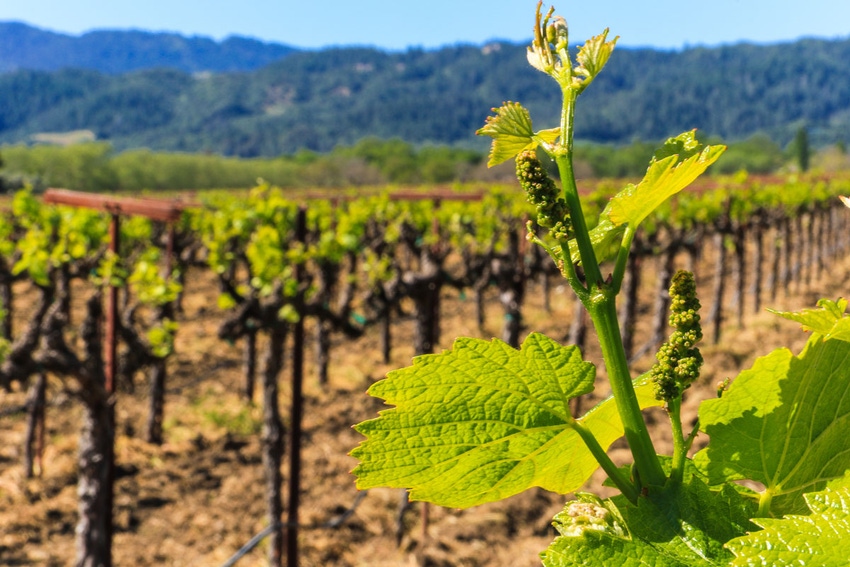
Bloom is an ideal time to perform a plant tissue analysis in your vineyard.
Soil testing identifies the nutrients in the soil, their levels and the need for any amendments, like gypsum, to improve soil quality, says Mark Battany University of California Cooperative Extension viticulture farm advisor for San Luis Obispo/Santa Barbara Counties.
Plant tissue analysis, involving either the petiole or leaf blade, tells you how much of the nutrients in the soil the vine has actually taken up, he says. And it enables you to monitor nutrient levels within the vines to detect any nutritional problems before they reduce yield and fruit quality.
A complete tissue analysis will assess levels of nitrogen (N), phosphorus (P), potassium (K), calcium (Ca), magnesium (Mg), zinc (Zn), manganese (Mn), boron (B), iron (Fe) and sometimes sulfur (S) and sodium (Na), all expressed either as percent or as parts per million (ppm).
Tissue testing allows you to manage nutrient applications more precisely,” Battany says. “For example, you can use results for adjusting nitrogen application rates to account for non-fertilizer sources, including any nitrates in irrigation water or nitrogen any cover crops may have supplied to the vines. This analysis can also help confirm any visual symptoms of a nutrient deficiency or toxicity issues in the soil, such as excess boron or chloride levels.”
He advises combining results of plant tissue testing with soil sample readings and visual observations of the vineyard’s response to weather conditions and recent cultural practices, such as irrigation and tillage, to best assess the effectiveness of your fertilizer program.
Battany recommends conducting a plant tissue analysis at two critical times during the season – at bloom and, again, at veraison. “This way, if you need to make any changes in your nutrient management program, the vines will have time to benefit from them,” he says
Plant tissue testing should be done for each block representing a single variety and rootstock and the same cultural practices, Battany says. He recommends collecting a large sample; say 60 to 100 petioles or leaf blades, from the block being tested.
At bloom, collect petioles or leaf blades from leaves located opposite the first or second flower cluster from the bottom of the shoot. However, at veraison, collect the petioles or leaf blades of fully-formed leaves farther out on the shoot. Usually, these are from five to seven leaves back from the shoot tip.
“If you track the leaves opposite the basal cluster late in the season, leaves at this position will have become degraded and senesce,” Battany says. “So, at veraison you want to test more recent growth that is more representative of the main bulk of the canopy.”
Also, he advises communicating with the lab conducting the analysis before collecting samples. “For example, if you’re using foliar nutrient sprays and not washing the samples properly, the tissue tests may give false readings,” he says. “So make sure the sample you’re collecting meets the lab’s requirements.”
About the Author(s)
You May Also Like




